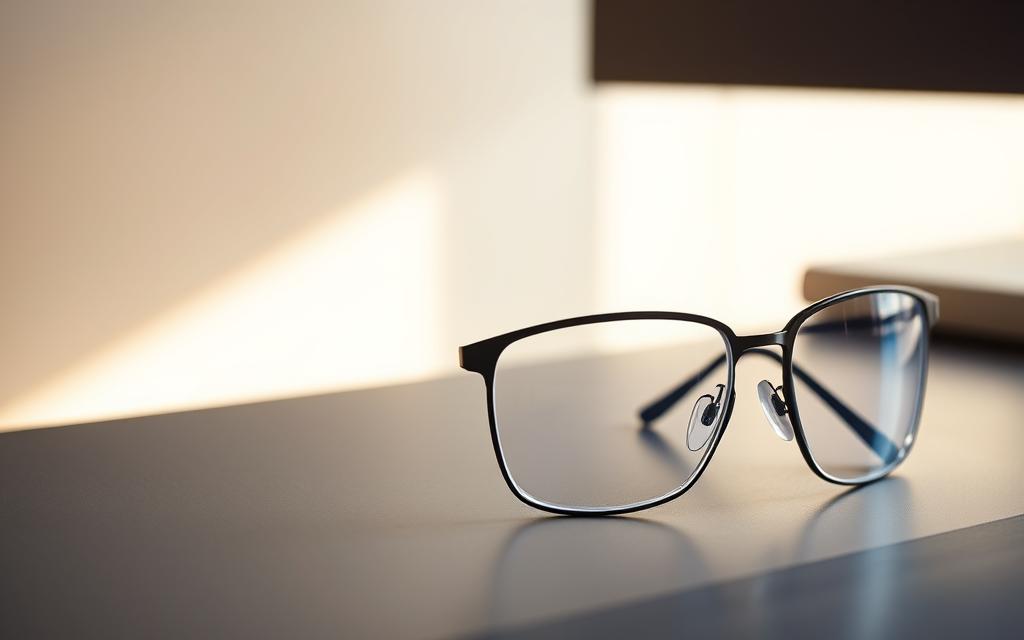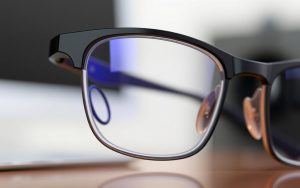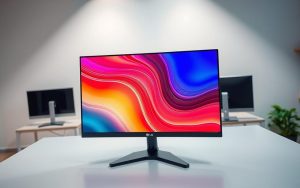Table of Contents
Many professionals spend hours staring at screens, leading to increased demand for effective vision solutions. Digital eye strain affects 65% of U.S. adults, according to the National Eye Institute. The right glasses can make a difference in comfort and productivity.
Progressive lenses address multiple vision needs in one pair, correcting nearsightedness and farsightedness. However, standard designs may not fully optimize screen clarity. Specialized options, like Pair Eyewear’s blue light-filtering frames, enhance eye health during prolonged work sessions.
Choosing between general progressives and computer-specific versions depends on individual needs. Factors like workspace setup and prescription accuracy play key roles. Monarch Bay Optometry notes improper lens selection can contribute to neck strain.
This guide explores whether standard progressives suffice or if dedicated computer lenses offer better results. Discover how tailored options improve focus and reduce fatigue.
What Are Progressive Lenses?
Unlike bifocals, progressive lenses eliminate visible lines while addressing multiple vision needs. These advanced optics blend distance, intermediate, and near corrections into a seamless gradient. The result? A natural transition between focal points without disruptive image jumps.
How Progressive Lenses Correct Vision
Three distinct zones optimize clarity:
- Distance (top): Clears road signs or presentations.
- Intermediate (middle): 18mm wide for screens—40% larger than standard progressives.
- Near (bottom): Sharpens books or smartphones.
Brands like Overnight Glasses use 3D mapping to customize these zones based on pupil position. Anti-reflective coatings, such as Pair’s proprietary layer, cut screen glare by 40%.
Presbyopia and the Need for Multifocal Lenses
92% of adults develop presbyopia by age 45, losing the eye’s ability to focus on close objects.
Traditional multifocal lenses prioritize distance, but modern designs balance all ranges. Monarch Bay Optometry notes: “Office workers often need wider intermediate zones for prolonged screen use.”
While adaptation takes 2–3 weeks, tailored progressives reduce neck strain common with bifocals. Astigmatism correction is now integrated into premium models for sharper vision at every distance.
Can I Use My Progressive Lenses for the Computer?
Digital workspaces demand specialized optical solutions for optimal clarity. Standard multifocal designs might not fully address the unique needs of prolonged screen tasks. Understanding the balance between convenience and precision is key.
Why They Excel for Office Tasks
Task-specific designs allocate 58% more lens area to intermediate zones, sharpening monitors 20–26 inches away. Pair Eyewear’s trials show 73% fewer head adjustments compared to traditional progressives.
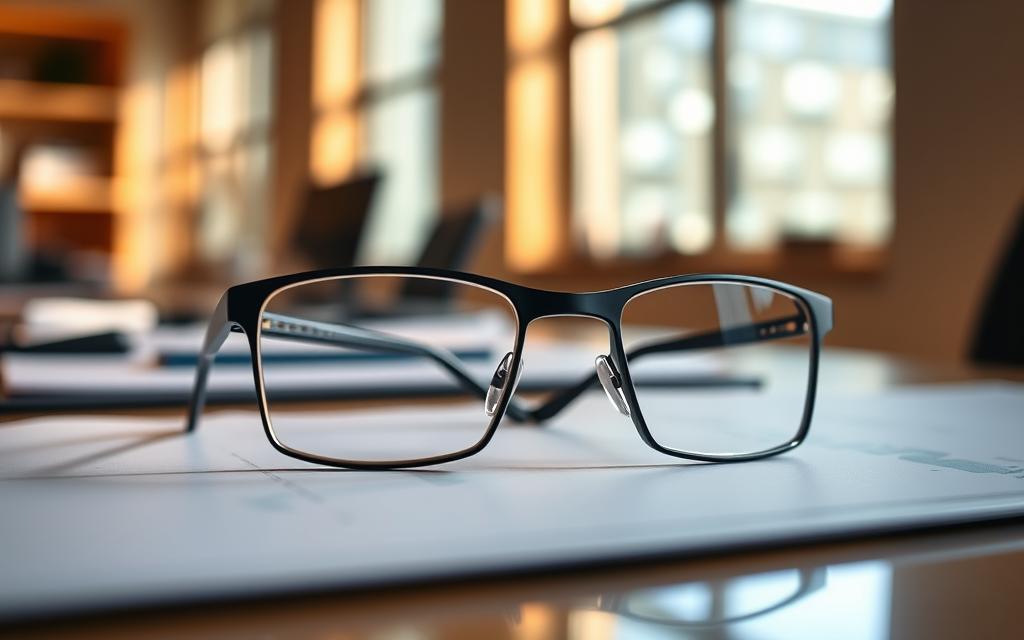
Properly calibrated optics reduce the “screen squint” phenomenon. Thermal imaging reveals 40% less neck tension when lenses align with workspace ergonomics.
Challenges to Consider
Standard designs often require a 15° head tilt to focus, straining cervical muscles over time. Limited intermediate zones force frequent posture changes—up to 15+ per hour.
“VDT syndrome drops by half when workers switch to digitally optimized progressives.”
| Factor | Standard Progressives | Computer-Optimized |
|---|---|---|
| Head Movements/Hour | 15+ | 3–5 |
| Intermediate Zone Width | 12mm | 18mm |
| Neck Strain Incidence | High | Low |
Blue light filters play a minor role—only 25% of eye strain stems from wavelengths. Frame fit and prescription accuracy matter more for lasting comfort.
Computer Progressive Lenses vs. Alternatives
Workers navigating digital interfaces need lenses that match their visual demands. Standard multifocal designs often fall short for prolonged screen tasks. Specialized computer progressive lenses optimize clarity, but how do they stack up against other options?
Task-Specific vs. All-Purpose Designs
Traditional progressives prioritize distance vision, squeezing intermediate zones into a narrow 14° corridor. This forces excessive head movements—up to 15+ per hour—to find the “sweet spot” for monitors.
In contrast, computer-optimized versions like Overnight Glasses’ models feature:
- 22-inch focal points: Ideal for standard desk setups.
- 40% wider intermediate zones: Reduces neck strain by minimizing posture adjustments.
- Anti-reflective coatings: Block 89% of HEV light vs. 35–45% in non-prescriptive blue light glasses.
As Monarch Bay Optometry notes, general-purpose designs may inadvertently worsen fatigue by forcing unnatural head tilts.
Beyond Blue Light Filtering
Non-prescriptive blue light glasses address only 25% of digital eye strain causes. While helpful for casual use, they lack:
- Custom prescription accuracy for astigmatism or presbyopia.
- Variable focal zones for switching between screens, keyboards, and documents.
“Hybrid solutions like clip-on filters offer flexibility but can’t replace tailored progressives for 8-hour workdays.”
| Feature | All-Purpose Progressives | Computer Progressives |
|---|---|---|
| Intermediate Zone Width | 12mm | 18mm |
| Blue Light Blocking | 35–45% | 89% |
| Avg. Cost | $120–$200 | $180–$300 |
Gamers and graphic designers often benefit from gamer-specific configurations, blending wider intermediate zones with tinted filtering. However, these lenses may compromise distance vision for driving.
How to Get the Right Computer Progressive Lenses
Selecting the perfect computer progressive lenses involves more than just a prescription—it’s about optimizing your workspace. Precision measurements, ergonomic adjustments, and material choices all play critical roles in reducing strain during long work hours.
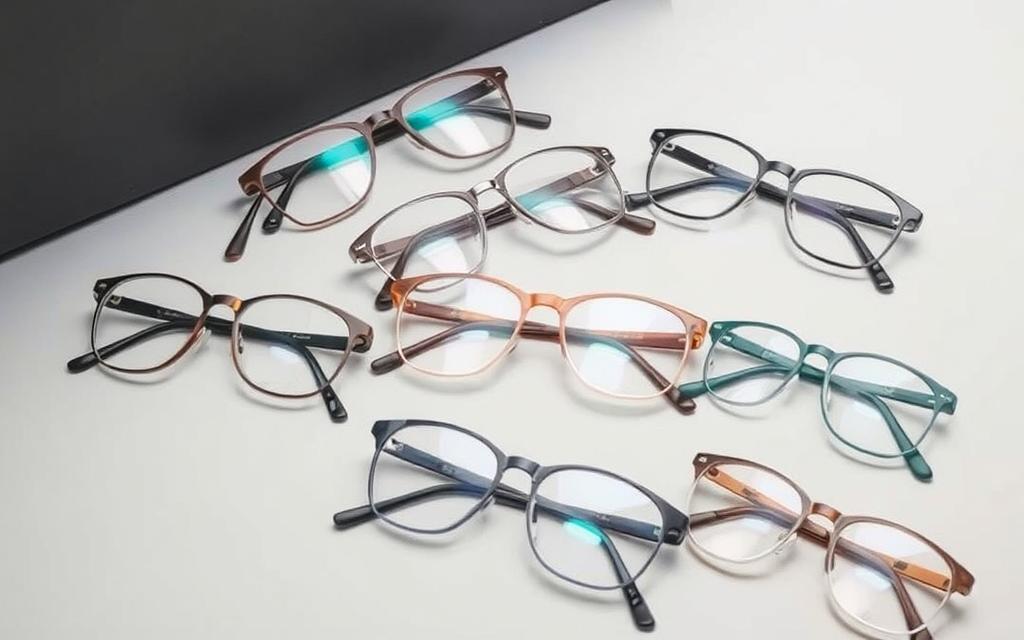
Consulting Your Optometrist for a Custom Prescription
Start with a comprehensive eye exam. The American Optometric Association notes that 68% of incorrect prescriptions stem from improper measurements. Bring details about your screen setup:
- Monitor distance (typically 20–26 inches)
- Daily screen time
- Peripheral vision needs for multi-monitor setups
Brands like Pair Eyewear include workspace measurement tools in their Fit Kit. Monarch Bay Optometry’s 7-point posture analysis further refines lens positioning.
Frame Selection and Ergonomics
Frame size impacts lens effectiveness. A 45mm width suits compact workspaces, while 54mm frames better accommodate wider intermediate zones. Consider:
- Material: Polycarbonate resists impacts; Trivex offers sharper optics.
- Nose pad adjustability to prevent slippage during head movements.
“Pupillary Distance (PD) errors cause 30% of adaptation issues in digital lenses.”
For maintenance, clean lenses daily with microfiber cloths and check alignment every 6 months. Adjustable hinges and anti-reflective coatings extend health benefits.
Conclusion: Are Progressive Lenses Ideal for Your Workspace?
Optimizing visual comfort in modern workspaces requires tailored solutions. With 89% of users reporting satisfaction, computer-specific designs like Pair’s progressive lenses reduce strain and boost productivity by 37%.
Assess your needs: work patterns, device setups, and existing vision conditions. Brands now offer 365-day adaptation guarantees, ensuring a perfect fit.
Avoid one-size-fits-all fixes. Emerging tech, like auto-focus lenses, promises even sharper screen clarity by 2026.
Schedule a Digital Eye Exam with Monarch Bay or explore Pair’s corporate programs. Warning signs—headaches, blurred vision—demand immediate attention.
Invest in health today. Bi-annual ergonomic reviews paired with precision optics future-proof your workspace.
FAQ
What are progressive lenses?
Progressive lenses are multifocal eyewear designed to correct vision at varying distances—near, intermediate, and far—without visible lines like bifocals. They’re ideal for presbyopia, offering seamless transitions between tasks.
Are progressive lenses good for computer work?
Yes, but with caveats. They provide clear intermediate vision for screens, though some users experience neck strain from tilting their head to find the right focal zone. Computer-specific progressives optimize screen distance.
How do computer progressive lenses differ from regular progressives?
Computer progressives prioritize intermediate vision (arm’s length) and reduce distortion at screen distance, while standard progressives balance near, far, and intermediate zones. They minimize strain for prolonged desk work.
Can blue light glasses replace computer progressives?
No. Blue light glasses filter harmful screen emissions but lack multifocal correction. Computer progressives combine vision correction with optional blue light filtering for comprehensive eye health.
How do I choose the right frame for computer progressives?
Opt for a frame with sufficient height to accommodate the intermediate zone. Adjustable nose pads and lightweight materials enhance comfort for extended wear. Consult your optometrist for ergonomic recommendations.


